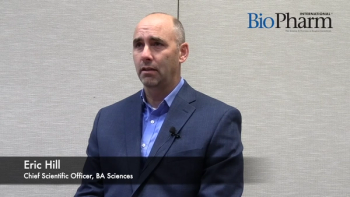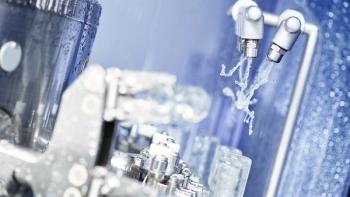
- BioPharm International-08-01-2003
- Volume 16
- Issue 8
Technology Integration: Enhancing QA and Compliance in Biopharmaceutical Manufacturing
When developing a strategy for using technology in biopharmaceutical manufacturing, include the interaction between automation and business systems and the roles they play in enhancing quality assurance and compliance.
Regulations ensuring the manufacture of safe and effective biopharmaceuticals have a long history in this industry. Regulations that continue to affect quality assurance (QA) and compliance were finalized more than two decades ago with the codification of CFR Parts 210 and 211, commonly referred to as current good manufacturing practices (CGMPs) for biopharmaceutical manufacturing (1). More recently - and despite the reexamination announced in February - CFR Part 11, "The Electronic Rule," provides expectations for the importance of electronic data, addressing the increasing use of these media in production and related activities (2).
Aside from defining the methods used in the manufacture, processing, packing, and holding of biopharmaceuticals, those regulations provide biopharmaceutical manufacturers with the system flexibility - whether manual or automated - to comply with FDA regulations. Even now, manufacturers use manual processes and paper-based systems to meet CGMP requirements. But the costs and inefficiencies of manual systems, coupled with ever-increasing regulatory demands, have drawn attention to the benefits that automated and computerized applications can bring to biopharmaceutical manufacturing - especially to quality and compliance issues.
When developing an overall strategy for using technology in biopharmaceutical manufacturing, the interaction between automation and business systems and how they enhance QA and compliance is important.
Process Control
Effective quality and compliance management in biopharmaceutical manufacturing is achieved by development and control of master product and process specifications based on data. Whether implemented for batch or discrete processing, automated control systems provide for recipe execution and data archiving to ensure that all processing occurs within previously validated ranges. Developing such process specifications and validated ranges product-by-product or process-by-process must be considered a subset of the Master Batch Record for the product, as defined in the CGMPs. Appropriate configuration management practices and electronic records and signature considerations are an essential component to maintaining compliance.
For example, consider the use of process automation systems to maintain adherence with approved product recipes. Such systems are designed to ensure the accurate processing of preprogrammed recipe steps and control process parameter ranges. To accomplish those goals, the product recipe is transformed - through programming - into an automated system recipe. During batch execution, the automation system can also collect actual data from a process. That information can be an important part of the final batch record because it demonstrates process control and confirms that manufacturing was completed within validated ranges.
However, most of these processes require some manual intervention by operation staff, whether that intervention is verifying the use of materials and resources or completing steps in the process that are not automated. Most manufacturers also require operators to record the completion of those manual steps along with any associated data in a paper record. That dual recipe system can lead to differences between the manual record and the recipe programmed into the automated system, errors and omissions in manually documenting those steps, and an increase in manual batch review and release. However, by defining manual steps in the process automation recipe and including acquired data from those steps in a final comprehensive batch record, manufacturers can eliminate duplicity and reduce contradictory information that can cause QA and compliance problems.
Process Verification
When used for discrete processes, automated systems provide around-the-clock assurance that manufactured products meet stated specifications. In-line process control inspections can instantaneously verify process characteristics, such as water for injection (WFI), and product characteristics, such as fill weights and volumes, foreign matter detection, container and box counts, and labeling accuracy. If properly designed and implemented, such systems can even perform nondestructive testing and verification of a product. For destructive tests, such systems ensure that sampling plans are met and data are collected for analysis. In fact, when the collected data are coupled with a high-speed data historian, such as Pi (OSI Software) or IHistorian (Intellution), and off-the-shelf analysis packages, such as Microsoft Excel, trends can be determined in real time to predict process degradation and future failures. That capability allows biopharmaceutical manufacturers to proactively adjust process parameters within their validated ranges to maintain bulk and finished product specifications, reducing the potential for product loss from rejection based on failure to meet specifications and the ensuing out-of-specification inspection.
It is critical that in-process inspection data also are integrated into the batch record (defining sampling frequencies, for example) and the completed electronic batch record to provide documented assurance of product quality and compliance during manufacturing.
Material and Resource Management
Process automation control systems cannot satisfy CGMP and QA requirements where material and resource verification are concerned. These verification processes are two areas that require specialized applications designed to manage such records. These applications are frequently labeled "Quality Management" software, so it's not surprising that this causes confusion when they don't manage QA and compliance.
Developing effective interfaces between automation control system and quality system applications helps close the loop for QA and compliance information. These systems can provide real-time compliance verification and answers to questions including whether or not the material is released, the material is past its review date, the operator is trained on this skill, the equipment is clean and ready for use, and the instrument is calibrated. A master recipe that includes a comprehensive integration plan for defining those system checks and for executing and documenting them in the final electronic batch record ensures a compliant QA strategy.
An Integrated Approach
Biopharmaceutical manufacturers can use new technology to develop a complete and integrated approach for manufacturing products according to CGMPs. That approach begins with the recognition that a single master recipe or batch record can formalize CGMP requirements and provide centralized control and compliance. To accomplish this, biopharmaceutical manufacturers need to do the following:
- Provide one master recipe for all of a product's process steps, including those that are manually performed, or document deviations. The execution system should produce one complete batch record documenting all steps.
- Include all of the product's in-line process verification requirements in the master recipe and the data collected from verification in the final batch record.
- Define any material and resource use checks in the master recipe, and document evidence of those checks in the electronic batch record.
Fortunately, achieving those goals is easier than ever. New computerized systems provide an integrated approach to authoring, executing, and controlling all process steps, including interfaces with other systems that provide information about materials and resources. Thanks to the work of many standards committees and technology companies, those systems can take QA and compliance practices to a new level of sophistication in biopharmaceutical manufacturing.
REFERENCES
(1) "Current Good Manufacturing in Manufacturing, Processing, Packing, or Holding of Drugs,"
Code of Federal Regulations
, Food and Drugs, Title 21 Part 210-211 (U.S. Government Printing Office, Washington, DC).
(2) "Electronic Records, Electronic Signatures: Final Rule," Code of Federal Regulations, Food and Drugs, Title 21 Part 11 (U.S. Government Printing Office, Washington, DC).BPI
Articles in this issue
over 22 years ago
A Rational, Step-Wise Approach to Process Characterizationover 22 years ago
GLPs and the Importance of Standard Operating Proceduresover 22 years ago
GMP Issues: Moving QA onto the Manufacturing Floorover 22 years ago
Inside Washington: Biotechnology is Central to Medical Progressover 22 years ago
Outsourcing Outlook: Signs of Changeover 22 years ago
Operations ExcellenceNewsletter
Stay at the forefront of biopharmaceutical innovation—subscribe to BioPharm International for expert insights on drug development, manufacturing, compliance, and more.




